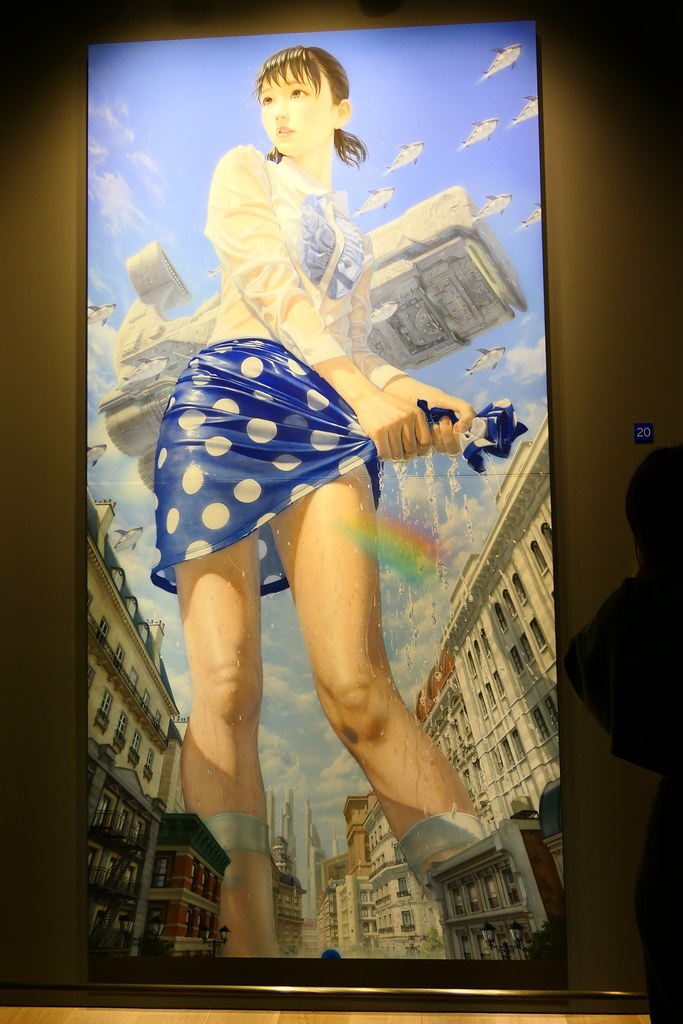
As we are nearing close to the end of the “Doraemon Tokyo 2017 Art Exhibit”, you come upon more amazing paintings and creations.
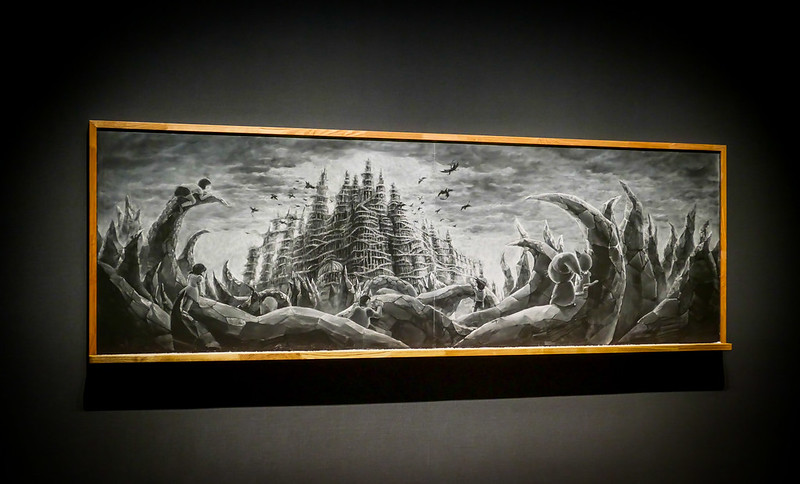
You will come across RenaRena’s “Determination” (Shizuka na Ketsui) which was created on white chalk on a blackboard, a white ink painting based on an aerial perspective with sfumato technique.
According to RenaRena, “I have presented the backdrop to the Doraemon stories – one of those things that we all look at frequently in our everyday lives without realizing it – by itself. The backdrop, the stage for the action, the place that makes the characters existence possible. But, just as the existence of landscape paintings suggests, it can sometimes be interesting to focus on those backdrops rather than on the characters. ‘Doraemon the Movie: The New Nobita’s Great Adventure into the Underworld’ really stirred up that kind of feeling in me. With this work, I wanted people to re-experience something they’ve already seen in a different way. I hope that it might make people want to rewatch or reread ‘Doraemon’, or else to look more carefully at the world around them”.
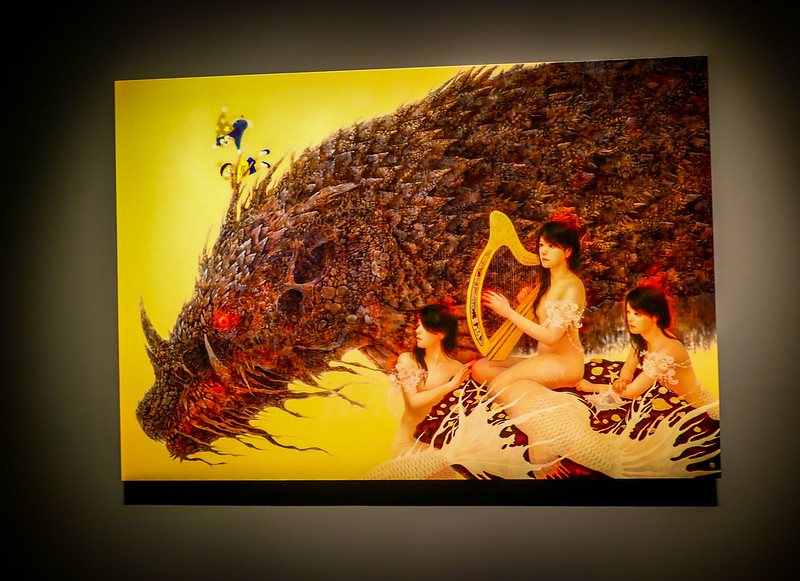
The next painting is by Ai Shinohara titled “To the Bright: Nobita’s Great Adventure into the Underworld” which was painted with oil on canvas in 2017.
According to Shinohara, “In the Underworld, Nobita encounters an island with Mermaid Demons and the Whale Demon. In the movie, they’re his enemies but I wanted to see them all playing around and having fun with one another, so I created a happy parody”.
Shinohara continued, “My style when I paint with oils is so different from the original art in the manga that I really struggled with bringing this picture off. I would like it if people could approach it with curiosity, as an expression of how Doraemon might look when rendered in oils”.
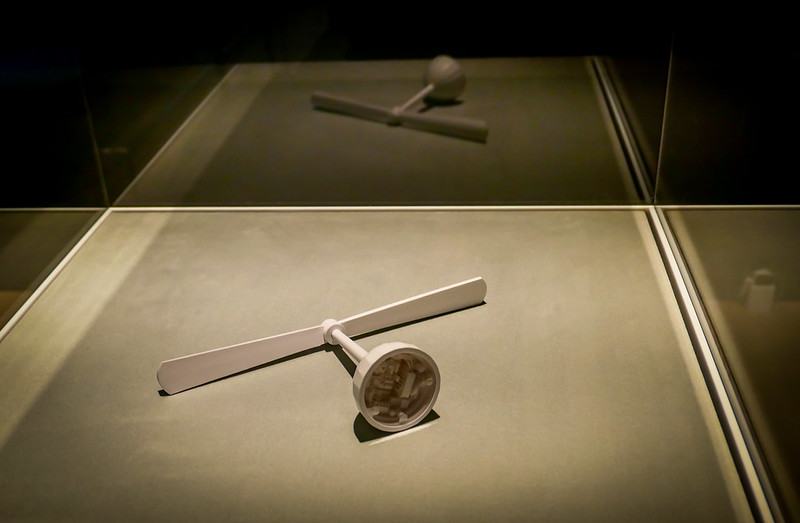

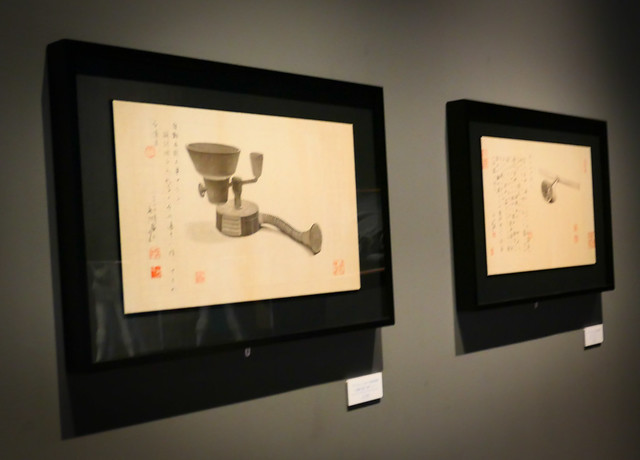
The next is “Doraemon’s Gadgets Dictionary – Hopter” and “Doraemon’s Gadgets Dictionary – Build-Anything Machine” by paper artist Wataru Ito and he created these structures using Kent paper.
This was a collaborative project in which Ito created the objects with kent paper, while Hidenori Yamaguchi painted them via Sumi (Japanese ink) on Japanese paper.
Ito wrote, “It took several attempts in order to produce that familiar, retro shape. The hose part is made so it can actually be moved. White paper gives great contrast when hit by the light, showing up small details and curved surfaces in fantastic detail. I hope that the viewers enjoy comparing the textures of these model gadgets with that of those depicted by Hidenori Yamaguchi in his ink-wash paintings and appreciating the unique features of both forms”.
Yamaguchi said that how he prepares is by reproducing classic works and master different types of techniques.
Yamaguchi said, “The way I make my artwork is by replacing those classic works with photographs, and producing studies of those instead, seeing how far I can take it. With a work of fantasy like Doraemon, though there are of course no photographs available. This left me a little stumped, so I decided to ask Wataru Ito to create models of two of Doraemon’s Gadges, the “Hopter” and the “Build-Anything Machine”. I then created illustrations from the models, combining them with text to create pages for these gadgets in Dorameon’s Gadgets Dictionary. And I hope that viewers appreciate the depth of expression that comes from the calligraphy, ink painting and seal engraving triad.
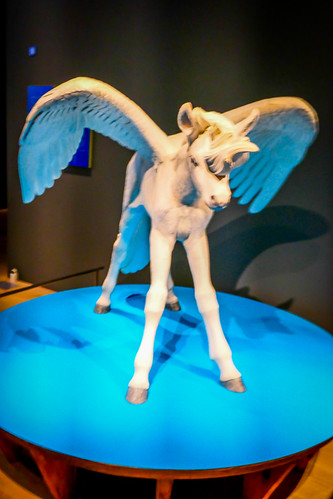


My favorite painting would be difficult to choose as there were so many good ones out there. But Tomoyoshi Sakamoto’s “Bokura wa itsu goro kara otona ni narun darou” (I wonder when we’ll grow up) was painted via acrylic on canvas.
Sakamoto said, “I’m a fan of large paintings, because they give the viewer an experience that’s different from usual. I think it’s a probably similar thing to watching a movie on the big screen. The ones experiencing that sense of occasion isn’t just us viewers, though. The guys on the screen have also been plucked out of their everyday lives and thrown into a great, big adventure. I thought I’d try and use a climactic scene as a way of pinning don that sense of the extraordinary, and sharing it. In confronting danger, the characters grow as people, and take a step toward adulthood. I feel like the story of that grow is a kind of parallel world unique to Doraemon the Movie. In creating this work, I felt like I’d like to add my own painting to one of the Doraemon characters’ parallel worlds”.
In part 8, we will discuss the final paintings featured at “The Doraemon Tokyo 2017 Art Exhibit at Roppongi Hills”.
